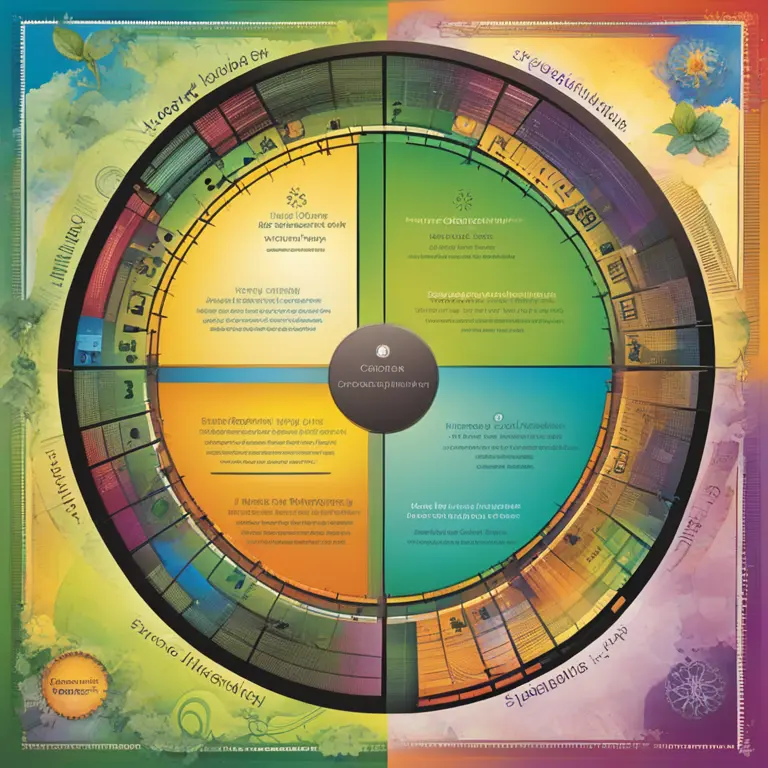
Biorhythms & Psychological Well-being
Delve into the intriguing world of biorhythms and their influence on psychological well-being and everyday life in this insightful article.
article by Adrian Wallace
Introducing Biorhythms: A Synchronized Dance of Life
What if the secret to understanding our moods, energy levels, and cognitive abilities could be found in natural physiological cycles? This is the foundation of biorhythms, a field that intersects the boundaries of biology and psychology, suggesting that our bodies operate on a set of intrinsic timekeeping systems. These systems, or biorhythms, are thought to influence a variety of physical and mental functions. Spanning over a century in conception, biorhythms psychology proposes that by aligning our lifestyles with these rhythms, we can enhance well-being and performance. The concept echoes through time, originating from the early 20th-century hypothesis that living beings have predictable and cyclic patterns affecting their capabilities.

The Core Cycles of Biorhythms
Typically, three primary cycles are said to govern biorhythms: the physical (23-day cycle), emotional (28-day cycle), and intellectual (33-day cycle). Each cycle is posited to ebb and flow from positive to negative phases, with distinct implications for behavior and mental state. During the positive phase of the physical cycle, one might experience heightened stamina and robust health, whereas the opposite might hold true during its downward phase. Similarly, the emotional cycle suggests fluctuations in mood and creativity, and the intellectual cycle prescribes variations in analytical thinking and memory. It's important to note that scientific support for these cycles' predictive power in daily life remains a point of debate within the psychological community.

Biorhythm Theory in Modern Life
While the concept of biorhythms has its skeptics, the digital age has revitalized interest in personal patterns and well-being optimization. Numerous apps and software now offer to track individual biorhythms, linking these cycles to recommendations for personal development and productivity. The idea complements contemporary psychological approaches that emphasize circadian rhythms and the need for a balanced lifestyle. As well, the growing body of research on the importance of sleep and its cyclical nature dovetails with the philosophies propounded by biorhythm enthusiasts. These alignments point to the enduring human desire to find patterns in life and to live in resonance with them.

Biorhythms' Impact on Performance and Decision-Making
One of the enticing applications of biorhythm theory lies in the domain of peak performance and decision-making. Some proponents advocate for planning activities around positive phases of relevant cycles—such as scheduling important meetings during a peak intellectual phase, or relying on intuition more during a positive emotional cycle. However, such straightforward application of biorhythm theory oversimplifies human behavior and ignores external factors that significantly impact performance. Critics argue that personal success and effective decision-making are less about rigid adherence to biological cycles and more about complex interplays of genetics, environment, and personal experiences.

Psychological Resonance and Personalized Approaches
In the context of mental health and therapy, the idea of syncing with personal rhythms has gained traction as a tool for self-reflection and mindfulness. Understanding one's own biorhythms could foster a greater sense of control, encouraging individuals to work with, rather than against, their own physiological tendencies. Yet, it is crucial to pair such approaches with evidence-based practices in psychology and medicine. Personalized therapy, informed by a client's understanding of their own rhythms, could potentially offer tailored strategies to support emotional regulation and stress management.
The Scientific Scrutiny of Biorhythm Theory
Despite its popular appeal, biorhythm theory remains controversial in scientific circles. It has been subject to scrutiny and criticism due to a lack of empirical evidence supporting its predictive abilities. Most research in chronobiology, the study of biological rhythms, concentrates on well-founded cycles such as circadian rhythms rather than the less substantiated 23-, 28-, and 33-day cycles. For biorhythms to gain broader acceptance, they would require more rigorous, peer-reviewed research to demonstrate their influence on human psychology and behavior.
Conclusion: Biorhythms as a Holistic Consideration
In conclusion, biorhythms offer a captivating lens through which to view our psychological experiences. While the scientific community continues to debate the validity and utility of biorhythm theory, its intersection with recognized concepts like circadian rhythms presents a fertile ground for further investigation. As we step further into the 21st century, the fusion of traditional ideas with contemporary psychological understanding and technology might yield new insights into the complex nature of human well-being.
Published: 1/25/2024
Modified: 1/25/2024
More predictions
Come back here soon to learn more about yourself and your future


The Basis of Biorhythms: Biological Cycles Explored
Delve into the foundations of biorhythms and discover how these natural cycles influence our daily lives and well-being.


The Rhythms Within: Biorhythm Horoscope Insights
Tap into the cosmic wisdom of biorhythms to understand your emotional, physical, and intellectual cycles for enhanced well-being and foresight.


The Intersection of Biorhythms & Astrology Explored
Discover the link between biorhythms and astrology to gain insights into your life's patterns and potential.